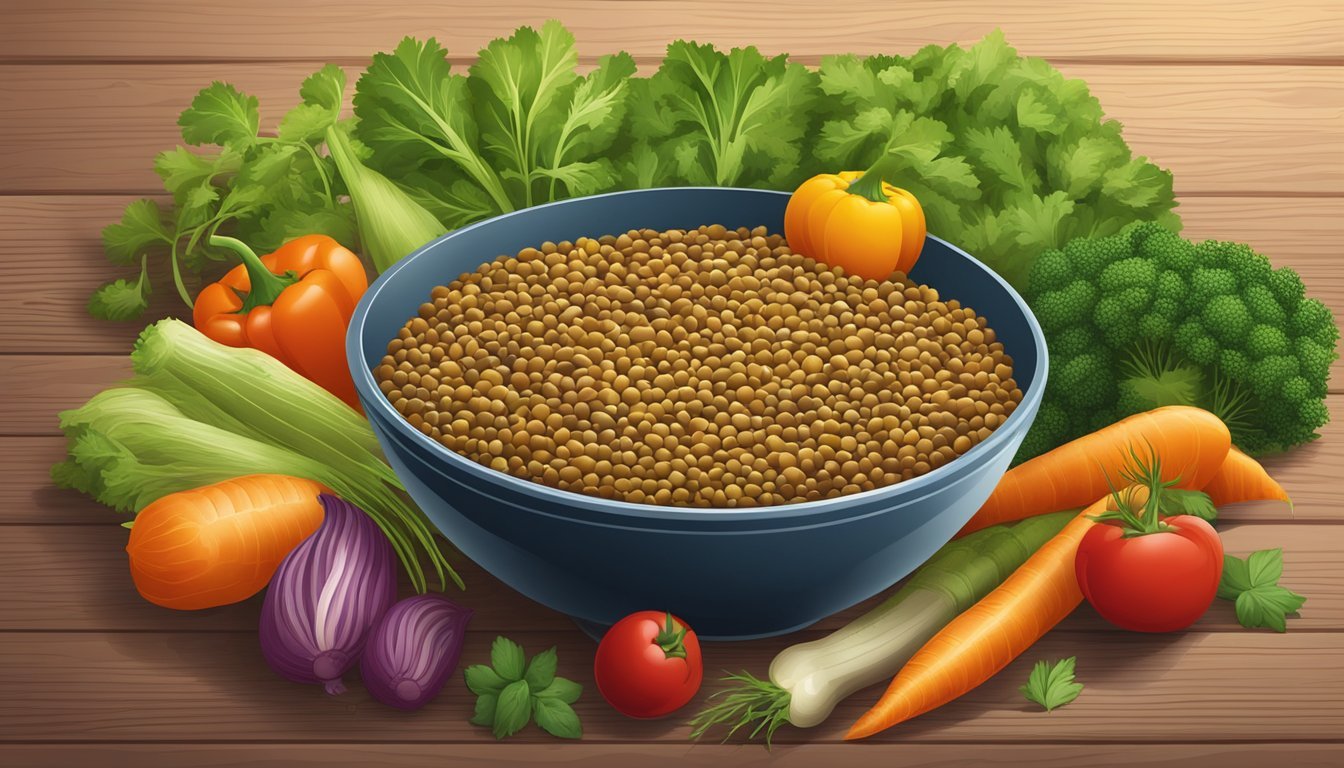Top 10 Natural Food Sources of N-Acetyl Cysteine (NAC)
Top Sources to Boost Your Health
N-Acetyl Cysteine (NAC) is a supplement form of the amino acid cysteine, which is critical for various bodily functions, including immune support and detoxification. While NAC itself is not found in foods, its precursor, cysteine, is present in many high-protein foods.
Understanding which foods are rich in cysteine can help individuals naturally support their health and potentially reduce the need for supplements. By incorporating these cysteine-rich foods into their diet, people can benefit from the numerous health advantages associated with this essential amino acid.
1) Turkey Breast
Turkey breast is an excellent source of N-Acetyl Cysteine (NAC). It is known for its high protein content and contains significant amounts of cysteine, the precursor to NAC.
Consuming turkey breast can help boost levels of cysteine in the body. This is important as cysteine supports the production of glutathione, a crucial antioxidant.
One of the benefits of turkey breast is its versatility. It can be incorporated into various dishes, from sandwiches to salads, making it easy to include in a balanced diet.
Additionally, turkey breast is low in fat, which makes it a healthier option for those looking to reduce their fat intake. This lean meat is an excellent choice for both maintaining and achieving health goals.
Including turkey breast in regular meals can contribute to sufficient NAC levels. It is a practical and tasty food choice for anyone looking to support their overall health.
2) Chicken Breast
Chicken breast is a significant source of N-Acetyl Cysteine (NAC). This lean protein is rich in cysteine, the amino acid from which NAC is derived. Including chicken breast in the diet can therefore contribute to higher NAC levels in the body.
Chicken breast is versatile and can be prepared in numerous ways, making it easy to incorporate into various meals. It's also low in fat and high in protein, providing an additional health benefit.
The presence of cysteine in chicken breast supports the production of glutathione, a critical antioxidant in the body. This antioxidant helps to protect cells from damage and supports overall cellular health.
Eating chicken breast regularly can aid in maintaining adequate levels of this essential amino acid, facilitating the body's natural antioxidant defenses. This makes it an excellent choice for those looking to boost their NAC intake through diet.
3) Pork Chops
Pork chops are an excellent source of N-Acetyl Cysteine (NAC), a form of the amino acid cysteine.
They are not only rich in protein but also contain essential nutrients such as vitamin B6, thiamine, and niacin.
Pork chops can be prepared using a variety of cooking methods, including grilling, baking, and stir-frying.
When including pork chops in one's diet, it is important to cook them to a minimum safe temperature of 145°F (63°C). This ensures they are both safe to eat and retain their nutritional value.
Though pork chops are beneficial in providing NAC, they can also be high in saturated fats, which may affect cholesterol levels if consumed excessively.
For those concerned about fat intake, choosing lean cuts and trimming visible fat can help make pork chops a healthier option. Balancing pork chops with other sources of NAC like chicken, yogurt, and lentils can offer a well-rounded diet.
4) Mushrooms
Mushrooms are an exceptional source of N-Acetyl Cysteine (NAC). They also provide ergothioneine, another important sulfur-based amino acid. This makes them a valuable addition to a nutrient-dense diet.
In addition to NAC, mushrooms are packed with vitamins and minerals. They contain B vitamins such as riboflavin, niacin, and pantothenic acid. These nutrients support the body's energy production and overall cellular health.
Mushrooms also contain antioxidants, which help combat oxidative stress. This can contribute to better immune function and overall health. Different varieties, including shiitake, maitake, and button mushrooms, can be used in a variety of dishes, enhancing both flavor and nutritional content.
Regular consumption of mushrooms can support the body’s detoxification processes due to their sulfur content. Cooking methods such as sautéing, roasting, or adding them to soups can help preserve their beneficial compounds. Making mushrooms a regular part of meals can contribute to the intake of NAC and other supportive nutrients.
5) Lentils
Lentils are a nutrient-dense food that ranks high in many essential nutrients, including N-Acetyl Cysteine (NAC). These edible seeds belong to the legume family and offer a rich source of protein and fiber.
A cooked serving of lentils provides approximately 25% protein and 60% carbohydrates. Additionally, they are packed with vital minerals like phosphorus, iron, and lysine, an important amino acid.
Consuming lentils can contribute beneficially to one's diet by offering a reliable plant-based protein source. They are convenient for many recipes, from soups and stews to salads.
In terms of NAC, lentils are notable for their cysteine content, which is a precursor to NAC. Including lentils in regular meals can thus support the body's production of NAC.
Easy to prepare and versatile in culinary uses, lentils also boast a low-fat profile while delivering substantial dietary fibers. This makes them an excellent choice for those seeking healthy, nutrient-rich foods.
6) Sunflower Seeds
Sunflower seeds are a notable source of N-Acetyl Cysteine (NAC), a form of the amino acid cysteine. These seeds contain essential nutrients that support overall health, including high levels of vitamin E and selenium.
Incorporating sunflower seeds into one's diet can help boost the intake of cysteine. This amino acid plays a crucial role in producing antioxidants and supporting immune function.
Sunflower seeds are versatile and can be easily added to various dishes. They can be used as a snack, sprinkled on salads, mixed into yogurt, or included in baked goods.
The seeds also provide healthy fats and protein, making them a nutritious addition to a balanced diet. Their rich nutrient profile helps in maintaining cardiovascular health and reducing inflammation.
For individuals looking to increase their NAC intake through natural food sources, sunflower seeds offer a convenient and tasty option. Enjoying a handful of these seeds daily can contribute to better health and well-being.
7) Cottage Cheese
Cottage cheese is a nutritious dairy product known for its high protein content. It is a good source of cysteine, an amino acid essential for the production of N-acetyl cysteine (NAC).
Cysteine found in cottage cheese helps the body produce glutathione, a powerful antioxidant.
This cheese variety is also relatively low in calories while providing essential nutrients like calcium and phosphorus. Including cottage cheese in the diet can contribute to maintaining healthy muscle and bone health.
When choosing cottage cheese, it's beneficial to opt for low-sodium or sodium-free versions. Lower sodium intake can help in managing blood pressure and reducing the risk of heart diseases.
Cottage cheese is versatile and can be incorporated into various meals. It can be consumed on its own, added to salads, or used as a topping for fruits and vegetables.
8) Tuna
Tuna is an excellent source of N-Acetyl Cysteine (NAC) due to its high protein content. Rich in cysteine, an amino acid, tuna plays a vital role in boosting glutathione levels in the body.
Glutathione is a powerful antioxidant that helps protect cells from damage and supports the immune system. Including tuna in the diet can therefore contribute to these health benefits.
Additionally, tuna is versatile and can be incorporated into a variety of meals. Whether it’s grilled, canned, or used in salads, it remains a convenient choice for those looking to increase their NAC intake.
Tuna also provides other essential nutrients like omega-3 fatty acids, which are beneficial for heart health. This combination of nutrients makes tuna a valuable addition to a balanced diet.
9) Salmon
Salmon is an excellent source of N-Acetyl Cysteine (NAC) due to its high protein content. This fish is rich in amino acids, including cysteine, which the body converts to NAC.
In addition to NAC, salmon offers significant amounts of omega-3 fatty acids. These healthy fats benefit cardiovascular health by reducing inflammation and lowering blood pressure.
The high-quality proteins in salmon support muscle growth and repair. Including salmon regularly in the diet can help maintain overall health and well-being. This fish is also a versatile ingredient, fitting well into various recipes.
10) Spinach
Spinach is a nutrient-dense leafy green that contains significant amounts of cysteine, an amino acid that serves as a precursor for N-Acetyl Cysteine (NAC). Regular consumption of spinach can help support the body's antioxidant systems, primarily through the synthesis of glutathione, which is essential for reducing oxidative stress.
Rich in vitamins and minerals, spinach provides a wide range of health benefits. Among its numerous nutrients, spinach is notable for its high levels of vitamin C, vitamin A, and iron, which can enhance the body's overall function and vitality.
Including spinach in one's diet is straightforward, as it can be added to salads, smoothies, and cooked dishes. Its versatility and mild flavor make it a favored choice for those looking to increase their intake of NAC through natural food sources.
Spinach also contains a significant amount of potassium, which is beneficial for cardiovascular health. Potassium helps regulate blood pressure, contributing to better heart health and reducing the risk of related conditions.
Incorporating spinach into daily meals is an excellent strategy for boosting overall nutritional intake while also supporting antioxidant capacity through its amino acid content.
Health Benefits of NAC
N-Acetyl Cysteine (NAC) offers several significant health benefits. These benefits center on its antioxidant properties, liver support, and positive impact on respiratory health.
Antioxidant Properties
NAC is a precursor to glutathione, one of the body's most potent antioxidants. By increasing glutathione levels, it helps reduce oxidative stress.
This can protect cells from damage caused by free radicals. Higher glutathione levels are linked to lower inflammation and better cellular function.
This antioxidant support is crucial in managing chronic diseases related to oxidative stress. It plays a key role in reducing the risk of chronic conditions such as heart disease and certain cancers.
Liver Support
NAC is commonly used to support liver health. It is especially effective in treating acetaminophen (Tylenol) toxicity.
In cases of overdose, NAC restores depleted glutathione levels, neutralizing the toxin. This liver-protective effect extends to other conditions causing liver damage.
It also supports overall liver function, helping the organ better detoxify harmful substances. This makes it valuable in managing liver-related conditions.
Respiratory Health
NAC has demonstrated benefits for respiratory health by acting as a mucolytic agent. It breaks down mucus, making it easier to expel.
This is particularly helpful in chronic respiratory conditions such as COPD and bronchitis. By reducing mucus, NAC improves airflow and breathing.
Additionally, its anti-inflammatory properties decrease lung inflammation. This contributes to better lung function and relief from conditions like asthma and cystic fibrosis.
How NAC Works in the Body
N-Acetyl Cysteine (NAC) is essential for several critical functions within the body, including the production of antioxidants and aiding detoxification processes. Understanding how NAC operates provides insight into its importance for overall health.
Cysteine and Glutathione Production
NAC serves as a precursor to the amino acid cysteine. Cysteine plays a fundamental role in synthesizing glutathione, one of the most powerful antioxidants in the body. Glutathione neutralizes free radicals and reduces oxidative stress, which helps protect cells from damage.
The benefits of glutathione span various aspects of health, particularly in maintaining a strong immune system and supporting liver function. By replenishing cysteine levels, NAC ensures that glutathione synthesis is sustained, which is crucial for combating inflammation and maintaining cellular health.
NAC and Detoxification
NAC aids in detoxifying the body by enhancing the elimination of harmful substances. One key area where NAC is effective is in the liver, where it promotes the detoxification of heavy metals and chemicals. The liver uses glutathione to convert these toxins into less harmful compounds, which are then expelled from the body.
NAC's detoxifying properties are particularly beneficial for individuals exposed to environmental pollutants or those with certain health conditions that necessitate enhanced detoxification processes. Its role in breaking down mucus also means it can benefit respiratory health, aiding in the removal of pollutants and irritants from the lungs.









